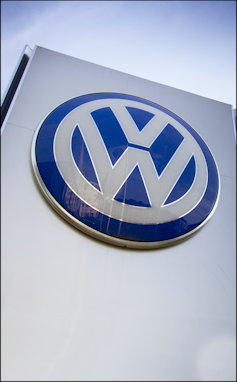What would a vehicle efficiency standard for new cars cost – or save – Australian drivers?
- Written by Peter Martin, Visiting Fellow, Crawford School of Public Policy, Australian National University

Opposition leader Peter Dutton says Labor’s proposed fuel efficiency standard for new cars would push up the price of a Mazda CX30 “by about $19,000”.
Given that right now the Mazda CX30 costs A$33,140, that’d be one hell of an increase.
So what should we really expect if Australia finally introduces fuel efficiency standards here – decades after the US and Europe? What could it cost us upfront for buying new cars? And how much could we save later in lower fuel bills?
Here’s what we do know, based on decades of international experience, new federal government analysis – and even cost estimates from a previous Coalition government.
Car efficiency standards are common overseas
Labor is proposing a so-called new vehicle efficiency standard of the kind proposed by the Coalition in 2016, championed by the Coalition in 2022, and common in the rest of the world.
Here’s how it works in Europe, the United States and Japan, and just about every advanced economy other than Russia and Australia.
Every car manufacturer has to meet an average efficiency standard for the new vehicles it sells each year, whether expressed in miles per gallon (the US) or carbon dioxide emitted per kilometre (Europe).
Europe has been doing it since 2009. When it tightened its standards in 2020, average CO₂ emissions of new passenger cars sold fell 12% and a further 12.5% the following year.
In the US, fuel efficiency has doubled
The United States has been doing it since 1975.
In that time, the average efficiency of its new cars has doubled, and it is about to tighten standards further.
After decades of being the odd one out, Australian passenger cars on average use 20% more fuel than passenger cars in the US.
And that isn’t only because Australians like SUVs and utes. In both Australia and the US, SUVs and utes account for four out of every five new light vehicles sold.
But the new SUVs and utes sold in Australia produce on average 24% more emissions than those sold in the United States. The new smaller cars sold in Australia produce 31% more.
Standards change the mix of what’s sold
Efficiency standards don’t prevent carmakers from selling inefficient vehicles. What they do is ensure they make those vehicles more efficient, or balance their sales with sales of more efficient ones.
At the moment, it means the vehicles sold in the US and elsewhere get advanced emissions technologies not generally offered in Australia.
It’s easy to understand why. With efficient vehicles prized in the US, Europe, and other places, because they are needed to balance up the sales of less efficient vehicles, they get diverted to those places – rather than Australia.
In the words of Volkswagen Group Australia chief Michael Bartsch, it makes Australia a “dumping ground” for older and less efficient vehicles.
Labor has put forward three options for targets: a slow start, a fast start, and its preferred option: “fast but flexible”.
Its preferred option would require carmakers selling in Australia to catch up with the standards of countries including the United States by 2028.
For motorists, the biggest benefit is fuel savings – calculated at A$107 billion between now and 2050. Against that sit vehicle technology, electricity and battery replacement costs of half as much, leaving motorists a long way ahead.
But would it push up the price of cars, as Dutton suggests?
‘No systemic, statistically significant increase’
The government’s consultation paper says the evidence consistently shows no price impact or a negligible price impact.
But common sense suggests it’ll make the price of gas guzzlers somewhat more expensive, and lean, fuel-efficient machines less expensive, as carmakers adjust the mix of what they trying to sell.
When the Coalition looked at this back in 2016, it found the standard it proposed would increase the price of an average-performing petrol passenger vehicle by between $800 and $2,000, and the price of an average-performing diesel light commercial vehicle by between $750 and $2,000.
At the petrol price at the time, $1.30 per litre – far less than we’re paying now – motorists would have been ahead after four years.
Maybe Labor’s plan will push up car prices more than the Coalition’s 2016 plan, because it is more ambitious, as Dutton suggests. Or maybe it will push up prices by less because vehicle technology has improved.
In the US, a statistical analysis of prices from 2003 to 2021 found “no systemic, statistically significant increase in inflation-adjusted vehicle prices” during two decades in which standards were tightened and fuel economy improved 30%.
And standards will need to tighten. Cars and other light vehicles account for 13% of Australia’s carbon emissions. Both this government – and its Coalition predecessor – committed to cutting Australia’s net emissions to zero by 2050.
Without vehicles pulling their weight, along with heavy industry and electricity, we won’t get there.
Authors: Peter Martin, Visiting Fellow, Crawford School of Public Policy, Australian National University





